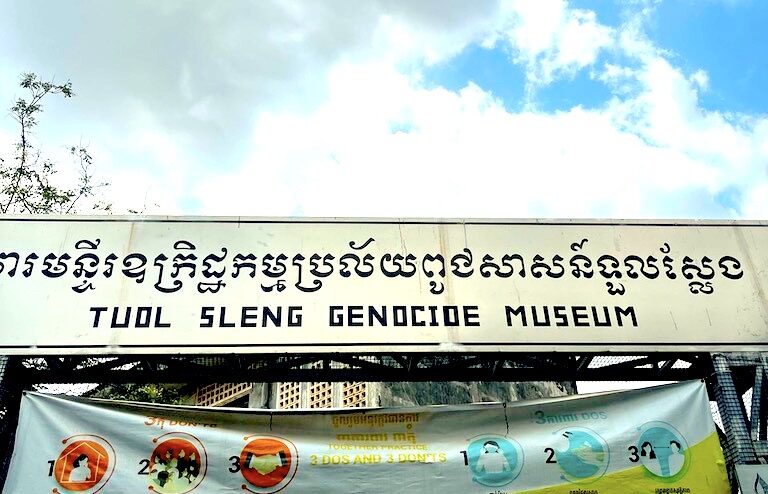I’m not sure there is anyone in the US who thinks about Cambodia without thinking of the Khmer Rouge first. For people who are over 40 we think of the revolution in Cambodia as being a part of recent events. Much like Apartheid or Rwanda. Pol Pot lived until 1998. Duch and Brother Number 2 lived until 2020. Our generation learned about this while the immediate aftermath was still happening. It’s difficult to reconcile it as being part of the long past events of History.
At the same time, it was nearly 50 years ago when the genocide began, and the World is much changed since then. We think of atrocities like this as being rare events, but they are happening throughout the world with alarming regularity. It was not long ago that the paranoid lunatics of ISIS were murdering whole villages, taking territory and purging their own ranks in the same way the Khmer Rouge did.
Where’s the Money? This site may contain affiliate links. Many travel sites include such links to earn a commission at no cost to readers.
What is Tuol Seng?
Many sites where the genocide took place are remote and difficult for tourists to reach. With a convenient location in Phnom Penh the Tuol Sleng Museum is easy for most visitors to access. Buying admission online is $15 with the audio tour headset. A visitor could spend most of the day here, or pace through the grounds in under an hour if time is a concern.
The Tuol Seng complex began its life as a high school. It is similar to some of the school complexes you will see today as you ride to Saigon by bus. Architecturally, it’s a fine and well designed complex. Had things happened differently, it could today be serving as a boutique hotel or a modern co-working space. When the Khmer Rouge came to power they took over the site for use as a sort of clearinghouse for political enemies.
“Political Enemies” isn’t really an accurate description of the victims of the regime. Certainly some of the people who passed though Tuol Sleng and went to the Killing Fields were part of the political opposition. The majority of them were simply innocent and ordinary people who paranoid maniacs thought might present even a slight problem or inconvenience. They were academics and the merchant class, Buddhist monks and the friends and relatives of their enemies, people who were simply caught up by circumstance.
Touring the Tuol Sleng Complex
A Khmer Rouge Black Site
Tuol Sleng, or S-21 as it was also known, was not a traditional prison. Locals referred to it at the time as the “place where people enter but do not leave.” The buildings and the rooms in them are all very similar. Many rooms were converted to cells where people were chained and held in extremely inhumane conditions. Others were used as interrogation and torture facilities. The primary function of Tuol Sleng was to record the “confessions” of the bourgeois class and use them as a basis to justify their execution.
It is not difficult to discern what you are seeing without the benefit of the audio tour. But while the museum features many photographs it is somewhat short on text based displays. The audio tour is very thorough in explaining exactly what each room was and the graphic history of what occurred throughout the complex.
It is so thorough that you might find yourself looking for places to skip, or wishing you could set it to 1.5x speed. When listening to the tour you will want to take note of the other visitors around you. Because everyone is listening at the same pace it might be helpful to find a shady place to sit and wait. Let large groups to move ahead of you. The rooms are small and it’s better to let groups of tourists pass through before you see them.
Tuol Sleng’s Graphic Displays
At the entrance and throughout the tour here are constant reminders how graphic the subject matter is. The audio tour often suggests sensitive visitors wait outside or skip an exhibit. I didn’t find any of the exhibits particularly gratuitous or disturbing, given the nature of the events being described. If you are fortuitous enough to tour a torture museum, there is unlikely to be anything here that will shock your sensibilities.
A key part of the museum is telling the stories of the final 14 victims at Tuol Sleng. Their photos are hanging on the walls of the rooms where they died, with their faces obscured in death. They’re buried in the museum’s courtyard. At the end of the tour a small collection of skulls is on display. There are signs around asking visitors not to take photos, but that prohibition is unenforceable and virtually everyone takes pictures.
To me the most disturbing part of the museum was at the end. Before the exit they have set up a little table under a canopy. Seated at the table is one of the survivors of torture at Tuol Sleng. It’s an invaluable thing to have firsthand witnesses to this history available to the museum’s directors and visitors. But it’s troubling to think this man (or maybe several of them?) not only survived these atrocities, but now returns to the site daily and talks about it constantly. It drives home how much the genocide still does belong to the present. It’s not yet entirely in the past.





































